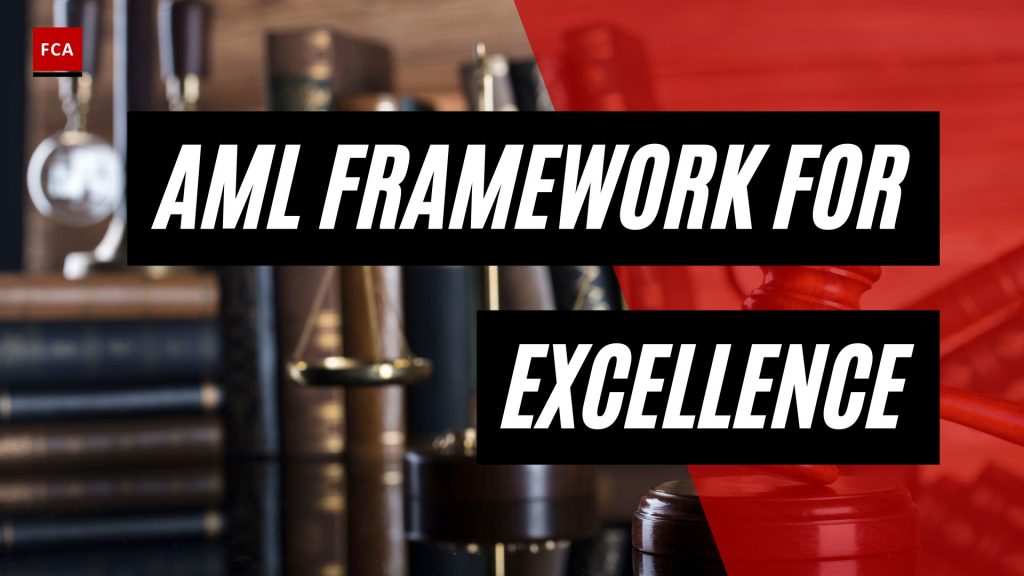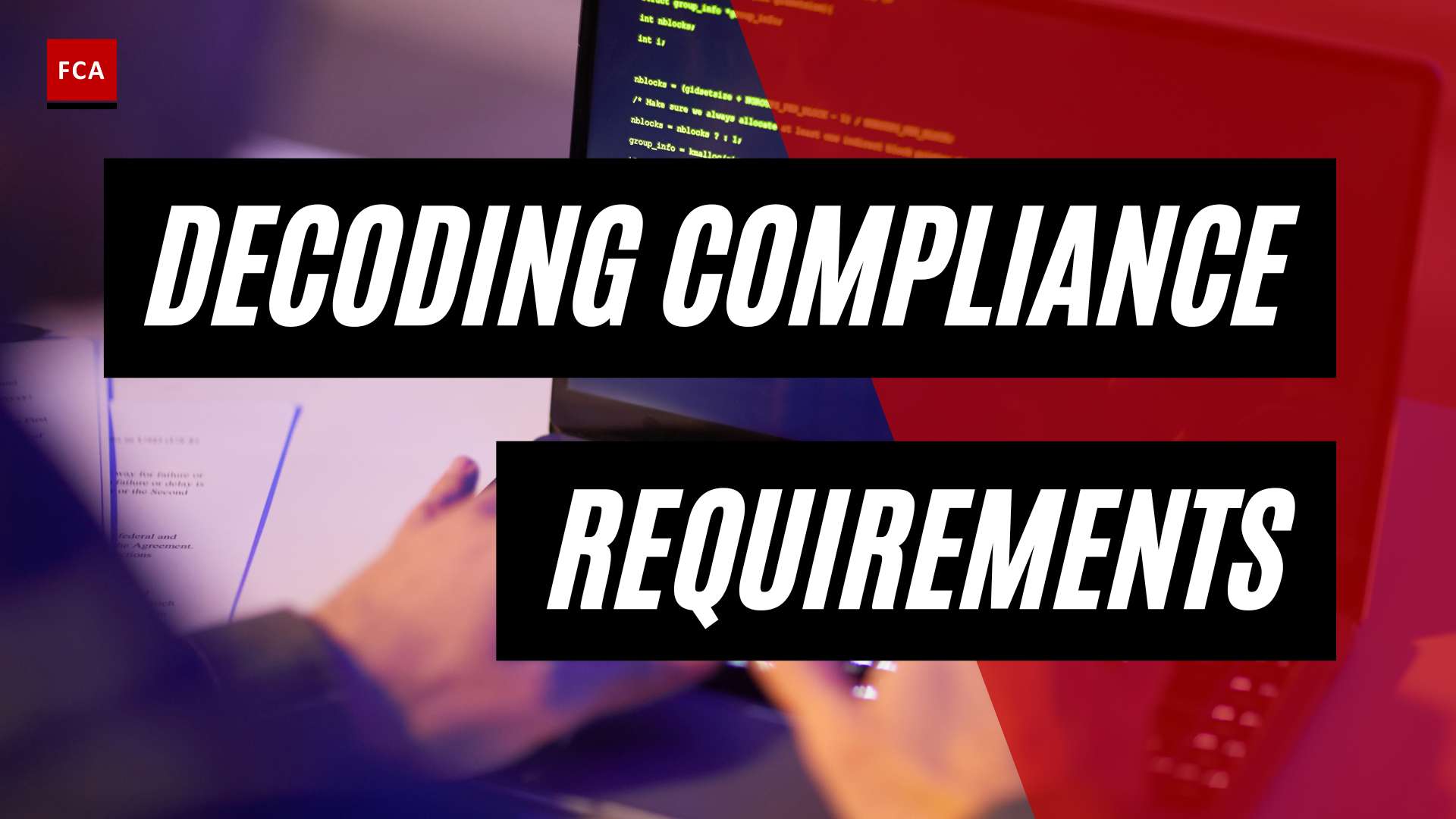Understanding AML Compliance Framework
To combat the serious issue of money laundering and illicit financial activities, financial institutions and organizations adhere to an Anti-Money Laundering (AML) compliance framework. Understanding the importance of AML compliance and the key components of AML compliance programs is crucial for professionals working in compliance, risk management, anti-money laundering, and anti-financial crime.
Importance of AML Compliance
AML compliance is of paramount importance in today’s global financial landscape. Its primary objective is to prevent and detect money laundering, terrorist financing, and other illicit activities. By implementing robust AML compliance measures, financial institutions can contribute to the integrity of the financial system, protect their reputation, and demonstrate their commitment to ethical and legal practices.
Compliance with AML regulations is not only a legal requirement but also a way for institutions to build trust with their customers and partners. It helps safeguard the institution’s operations, maintain the security and transparency of financial transactions, and mitigate the risk of becoming unwitting participants in illegal activities.
Non-compliance with AML regulations can result in severe consequences for financial institutions. These consequences may include monetary penalties, reputational damage, operational disruption, legal repercussions, and the loss of banking relationships. Therefore, adhering to the AML compliance framework is crucial for the long-term success and sustainability of financial institutions.
Key Components of AML Compliance Programs
AML compliance programs encompass various components that work together to establish a comprehensive and effective framework. These components include:
-
Risk Assessment: Conducting a thorough risk assessment is the foundation of any AML compliance program. It involves evaluating the institution’s exposure to money laundering risks, assessing the inherent risks associated with customers, products, and jurisdictions, and implementing appropriate risk mitigation measures.
-
Customer Due Diligence (CDD): Customer due diligence is a crucial aspect of AML compliance. It involves verifying the identity of customers, conducting ongoing monitoring of their transactions, and assessing the level of risk they pose to the institution. Robust CDD procedures help identify suspicious activities and ensure compliance with regulatory requirements.
-
Internal Controls: Implementing strong internal controls is essential for effective AML compliance. This includes establishing policies and procedures, assigning responsibility for compliance, conducting regular training programs for employees, and maintaining adequate record-keeping systems. Internal controls help ensure that AML policies are consistently followed throughout the institution.
-
Compliance Audits: Regular compliance audits are vital to assess the effectiveness of AML compliance programs. These audits help identify any deficiencies, gaps, or areas for improvement in the institution’s AML processes. Conducting audits ensures that the institution remains compliant with regulatory requirements and allows for timely corrective actions to be taken.
By integrating these key components into their AML compliance programs, financial institutions can establish a robust framework to combat money laundering and uphold the integrity of the global financial system.
In the next sections, we will explore the legal challenges and case law surrounding AML compliance, the role of financial regulatory authorities in shaping AML frameworks, and the various technology solutions available to enhance AML compliance efforts.
For more information on AML compliance, you can refer to our articles on aml compliance software and aml compliance training.
AML Legal Challenges and Case Law
Ensuring compliance with anti-money laundering (AML) regulations is not without its challenges. Financial institutions face various obstacles when it comes to AML compliance, and non-compliance can result in significant legal consequences. In this section, we will explore the challenges associated with AML compliance and the legal repercussions of non-compliance.
Challenges in AML Compliance
Financial institutions encounter several challenges when it comes to maintaining AML compliance. One of the key difficulties is managing cross-border and multi-jurisdictional AML compliance standards. Different jurisdictions have their own AML regulations, making it arduous for financial institutions to ensure compliance across the organization. This complexity increases the need for comprehensive knowledge of the AML regulations in each jurisdiction, as well as the ability to adapt policies and strategies accordingly. Ensuring consistent compliance while addressing the unique requirements of each jurisdiction can be a daunting task (Sanction Scanner).
Criminals are constantly evolving their methods of money laundering, utilizing techniques such as the use of shell companies, offshore accounts, digital currencies, and complex transactions like layering and integration. Detecting and preventing these activities poses a significant challenge for financial institutions. Staying updated on emerging money laundering techniques and implementing effective detection measures are essential to combat these evolving threats (Sanction Scanner).
Another challenge faced by financial institutions is the increasing requirement for customer due diligence. AML regulations demand more information on customers and beneficial owners, necessitating robust processes for identifying beneficial ownership and addressing any AML deficiencies revealed by regulatory assessments. Striking a balance between obtaining the necessary information while maintaining a smooth customer experience can be a delicate task for financial institutions (Sanction Scanner).
Legal Consequences of Non-Compliance
Non-compliance with AML regulations can have severe legal consequences for financial institutions. Regulatory bodies, such as the Financial Conduct Authority (FCA), have the authority to impose monetary penalties on institutions that fail to meet AML requirements. These penalties can be substantial, leading to financial losses for the institution. Moreover, non-compliance can result in reputational damage, operational disruptions, and the loss of banking relationships. Financial institutions may face legal actions from regulatory authorities, which can further harm their standing and impose additional financial burdens (FlagRight).
It is important for financial institutions to understand the gravity of AML non-compliance and take steps to prevent it. This includes establishing a robust risk assessment process, implementing effective customer due diligence procedures, regularly training staff on AML requirements, and conducting periodic internal compliance audits. By prioritizing AML compliance and addressing the challenges associated with it, financial institutions can mitigate legal risks and ensure a strong compliance framework (FlagRight).
In the ever-evolving landscape of AML compliance, it is essential for financial institutions to stay updated on regulatory changes, adapt their processes accordingly, and seek professional guidance to navigate the legal complexities. By doing so, they can not only meet their legal obligations but also contribute to the global effort in combating financial crime.
The Role of Financial Regulatory Authorities
Financial regulatory authorities play a critical role in ensuring the effectiveness of anti-money laundering (AML) efforts. These authorities establish guidelines and frameworks that financial institutions must adhere to in order to combat money laundering and other financial crimes. In this section, we will explore the role of the Financial Conduct Authority (FCA) and the international standards for AML compliance.
Financial Conduct Authority (FCA) and AML Framework
The Financial Conduct Authority (FCA) is one of the primary regulatory bodies overseeing AML efforts in the United Kingdom. The FCA’s AML framework serves as a comprehensive guide for financial institutions operating within the region, providing them with the necessary guidance to establish robust AML compliance programs (FlagRight).
The FCA’s AML framework is designed to align with the Financial Action Task Force’s (FATF) Recommendations, which are the international standard for AML efforts. The FATF is an intergovernmental organization that sets global standards for combating money laundering, terrorist financing, and other related threats to the integrity of the financial system (FlagRight).
Compliance with the FCA’s AML framework is of utmost importance for financial institutions. It enables them to protect the integrity of the financial system, avoid regulatory penalties, build trust with customers and partners, and facilitate global operations. By adhering to the FCA’s guidelines, financial institutions demonstrate their commitment to preventing money laundering and other financial crimes (FlagRight).
International Standards for AML Compliance
In addition to the FCA’s AML framework, financial institutions worldwide must adhere to international standards for AML compliance. These standards provide a common framework for combating money laundering and ensuring the integrity of the global financial system.
One of the key international standards is the Financial Action Task Force’s (FATF) Recommendations. The FATF sets out a comprehensive set of measures and best practices to be implemented by countries and financial institutions to prevent money laundering and terrorist financing. The recommendations cover areas such as customer due diligence, reporting of suspicious transactions, and the establishment of AML policies and procedures.
By adhering to these international standards, financial institutions demonstrate their commitment to combating money laundering on a global scale. Compliance with these standards not only helps prevent financial crimes but also enhances the reputation and credibility of the institution in the eyes of regulators, customers, and partners.
Financial regulatory authorities, such as the FCA, play a vital role in ensuring that financial institutions comply with these international standards. They provide guidance, conduct inspections, and enforce regulations to ensure that AML compliance programs are effective and robust.
Adhering to the AML frameworks established by financial regulatory authorities and complying with international standards is crucial for financial institutions to combat money laundering and protect the integrity of the global financial system. By doing so, they contribute to a safer and more secure financial environment for all stakeholders involved.
Ensuring AML Compliance
To ensure compliance with Anti-Money Laundering (AML) regulations, financial institutions need to implement effective measures for risk assessment, customer due diligence, internal controls, and compliance audits. These components play a crucial role in preventing money laundering and maintaining a robust AML compliance framework.
Risk Assessment and Customer Due Diligence
A key aspect of AML compliance is conducting thorough risk assessments and implementing robust customer due diligence procedures. Financial institutions must have a clear understanding of their customers’ profiles, transactions, and risk levels to identify and mitigate potential money laundering risks. This involves gathering relevant information, such as identification documents, verifying the source of funds, and assessing the potential risks associated with each customer.
By conducting comprehensive risk assessments, institutions can determine the appropriate level of due diligence required for each customer. This ensures that higher-risk customers, such as politically exposed persons (PEPs) or those involved in high-value transactions, receive enhanced scrutiny. Regularly updating customer information and conducting ongoing monitoring are essential to detect and report any suspicious activities.
Internal Controls and Compliance Audits
Establishing strong internal controls is essential for effective AML compliance. Financial institutions should develop and implement policies, procedures, and organizational structures that mitigate money laundering risks and ensure adherence to AML regulations. These controls help detect and prevent potential violations, ensuring that the institution operates within the legal framework.
Regular compliance audits are crucial to assess the effectiveness of internal controls and identify any gaps or weaknesses in the AML compliance program. These audits evaluate the institution’s adherence to policies, procedures, and regulatory requirements. By conducting periodic reviews, institutions can proactively address any deficiencies, improve processes, and strengthen their overall AML compliance framework.
By prioritizing risk assessment, customer due diligence, internal controls, and compliance audits, financial institutions can enhance their AML compliance efforts. These measures help detect and prevent potential money laundering activities, ensuring that institutions operate within the regulatory framework and mitigate legal risks.
To further support AML compliance, financial institutions can leverage AML compliance software and provide AML compliance training to their staff. Staying up to date with the latest AML compliance regulations and AML legal requirements is crucial for maintaining a robust AML compliance framework.
Technology Solutions for AML Compliance
In the ever-evolving landscape of AML compliance, technology solutions play a crucial role in helping financial institutions effectively detect and prevent money laundering activities. Two notable technology solutions for AML compliance are GitHub’s Advanced Security Code Scanning and the integration of technology to address AML compliance challenges.
GitHub’s Advanced Security Code Scanning
GitHub’s Advanced Security Code Scanning is a valuable tool in supporting the AML compliance framework. This feature allows for the scanning of code in a repository, enabling financial institutions to identify and address security vulnerabilities in their codebase. By doing so, organizations can ensure compliance with regulatory requirements related to financial security and transparency.
Implementing code scanning helps financial institutions enhance the security of their software and applications, reducing the risk of vulnerabilities that could be exploited for money laundering activities. This technology solution supports the development of robust and secure software systems that align with AML compliance guidelines.
AML Compliance Challenges and Technology Integration
Financial institutions face various challenges when it comes to AML compliance, and integrating technology can help address these complexities. One of the challenges involves integrating know-your-customer (KYC) data and systems. This process can be intricate and time-consuming, especially in terms of enhancing data quality and standardization for centralized analysis of fraud and financial crimes. By leveraging technology solutions, financial institutions can streamline these processes, resulting in more efficient and effective compliance operations.
Furthermore, with the shift to remote working, the challenge of maintaining AML compliance has been exacerbated. Financial institutions are increasingly relying on technology solutions to facilitate remote onboarding and monitoring processes. These solutions enable organizations to perform robust customer due diligence remotely, ensuring compliance while adapting to the changing work environment.
By embracing technology solutions tailored to AML compliance, financial institutions can enhance their ability to detect and prevent money laundering activities. These solutions enable organizations to automate compliance processes, analyze vast amounts of data efficiently, and identify suspicious transactions or patterns that may indicate money laundering. However, it’s important to note that technology solutions should be implemented in conjunction with comprehensive AML compliance programs that encompass other essential components, such as risk assessment and internal controls.
As technology continues to advance, financial institutions must stay abreast of the latest innovations in AML compliance. By leveraging technology solutions and integrating them into their compliance programs, organizations can enhance their ability to combat money laundering, maintain regulatory compliance, and protect the integrity of the financial system.
AML Compliance in Different Jurisdictions
Anti-Money Laundering (AML) compliance is a global concern, and various jurisdictions have implemented regulations to combat money laundering and terrorist financing. In this section, we will explore AML compliance regulations in the United States and the European Union.
AML Compliance Regulations in the United States
In the United States, AML compliance is primarily governed by the Bank Secrecy Act (BSA). Financial institutions are required to develop and implement robust AML compliance programs to prevent money laundering and comply with reporting obligations. Under the BSA, financial institutions must record and report cash transactions that exceed a certain threshold or appear suspicious in nature.
The AML compliance program in the United States typically consists of five pillars, as outlined by the BSA:
-
Designation of a Compliance Officer: Financial institutions must designate an individual responsible for overseeing and managing the AML compliance program.
-
Development of Internal Controls: Institutions are required to establish internal controls and policies to detect and prevent money laundering activities. These controls may include customer due diligence procedures, transaction monitoring systems, and suspicious activity reporting mechanisms.
-
Establishing a BSA Training Program: Financial institutions must provide training to employees to ensure they are knowledgeable about AML regulations and can effectively identify and report suspicious transactions.
-
Independent Audits and Reviews: Regular independent audits and reviews of the AML compliance program are necessary to evaluate its effectiveness and identify any areas for improvement.
-
Performing Customer Due Diligence: Financial institutions must conduct customer due diligence to verify the identity of their customers and assess the risk associated with their transactions. This includes implementing Know Your Customer (KYC) procedures and ongoing monitoring of customer activity.
These regulations help ensure that financial institutions in the United States are equipped to identify and report suspicious activities, contributing to the overall efforts to combat money laundering and protect the integrity of the financial system.
AML Compliance Regulations in the European Union
In the European Union (EU), AML compliance regulations are governed by various directives. The Fourth Anti-Money Laundering Directive (AMLD) of the EU, implemented in 2017, established a comprehensive framework for AML compliance across member states. It introduced requirements for customer due diligence, enhanced transparency, and the establishment of central registers for beneficial ownership information.
Building upon the Fourth AMLD, the Fifth Anti-Money Laundering Directive (AMLD5) was implemented in 2020. It introduced additional measures to further strengthen AML compliance, including the regulation of virtual currencies and prepaid cards, and the establishment of a centralized register for bank accounts.
Looking ahead, the 6th Anti-Money Laundering Directive (6AMLD) and the 7th Anti-Money Laundering Directive (7AMLD) are set to bring further changes to AML compliance in the European Union. The 6AMLD expands reporting obligations, particularly in relation to cross-border transactions, while the 7AMLD aims to establish a single EU rulebook on AML and counter-terrorist financing.
Financial institutions operating within the European Union must adhere to these directives and implement robust AML compliance programs. These programs typically include customer due diligence, transaction monitoring, and ongoing risk assessment to prevent money laundering activities and ensure compliance with regulatory requirements.
By understanding the AML compliance regulations in different jurisdictions, organizations can tailor their compliance programs to meet the specific requirements of each region. This allows for a more effective and comprehensive approach to combating money laundering and maintaining the integrity of the global financial system.
Future Trends and Regulations in AML Compliance
As the landscape of financial crime continues to evolve, so does the framework of Anti-Money Laundering (AML) compliance. Staying updated on future trends and regulations is crucial for professionals working in compliance, risk management, anti-money laundering, and anti-financial crime. In this section, we will explore two key aspects: the 6th and 7th Anti-Money Laundering Directives and the challenges and solutions in AML compliance.
The 6th and 7th Anti-Money Laundering Directives
The 6th Anti-Money Laundering Directive (6AMLD) is a significant development in AML compliance. It requires regulated businesses to report transactions exceeding €1000 or more in a single transaction, €1000 cumulatively in several transactions, and €200 or more in transactions involving high-value goods with a minimum of €10,000 (NorthRow). This directive aims to strengthen the existing AML framework, enhance transparency, and combat money laundering and terrorist financing more effectively.
On the horizon is the 7th Anti-Money Laundering Directive, which aims to establish a framework for the creation of a single EU rulebook on anti-money laundering and counter-terrorist financing throughout Europe (NorthRow). This directive highlights the ongoing commitment to combat financial crime across borders and harmonize AML regulations within the European Union.
Challenges and Solutions in AML Compliance
AML compliance continues to face numerous challenges, necessitating innovative solutions to address them. One of the significant challenges is the lack of consistent AML risk assessments within the industry. In 2021, only 62% of global financial institutions had an AML risk assessment in place, which is a 10% decrease since 2019 (NorthRow). This highlights the growing gap in compliance protocols and the need for organizations to prioritize robust risk assessment processes.
Another challenge arises from the shift to remote working, which has increased the complexity of maintaining AML compliance. Remote onboarding and monitoring processes create new vulnerabilities and require enhanced technological solutions to ensure compliance. AML technology solutions, such as AML compliance software, have become essential for efficiently managing compliance in remote environments (NorthRow).
Furthermore, specific sectors face unique compliance challenges. For example, the real estate sector has been a significant area for money laundering and terrorist financing. Since 2008, the sector has accounted for more than €4 billion in money laundering fines within the European Union (NorthRow). Addressing these challenges requires sector-specific guidelines and stringent compliance measures.
To overcome these AML compliance challenges, organizations must adopt best practices and leverage technology solutions. Implementing comprehensive AML compliance training, conducting regular AML compliance audits, and establishing robust AML compliance controls are key steps toward achieving compliance excellence. It is important for organizations to stay informed about the changing regulatory landscape, implement the necessary measures, and adapt their compliance frameworks accordingly.
By keeping abreast of future trends and regulations in AML compliance, professionals can navigate the evolving landscape of financial crime and contribute to the fight against money laundering and terrorist financing.
AML Compliance Best Practices
To achieve excellence in Anti-Money Laundering (AML) compliance, organizations must establish effective AML compliance programs and adhere to industry best practices. These programs serve as the foundation for detecting and preventing money laundering activities within financial institutions. Two key components of AML compliance best practices are establishing an effective AML compliance program and implementing the five pillars of AML compliance.
Establishing an Effective AML Compliance Program
An effective AML compliance program is essential for organizations in their efforts to combat money laundering. Such a program should focus on multiple aspects, including:
-
Detection and Reporting: The program should emphasize the detection and reporting of suspicious money laundering activities. This involves implementing robust internal systems and practices to identify potential instances of financial crime.
-
Risk Assessment: Conducting thorough risk assessments of customer activities is crucial. Organizations should have a Know Your Customer (KYC) program that assesses customer risk during onboarding and continuously as new information is gathered.
-
Compliance Culture: Encouraging a compliance culture at all levels of the organization is vital. Employees should be aware of their roles and responsibilities in preventing money laundering and should receive regular training to stay updated on the latest AML guidelines.
-
Internal Practices and Systems: Organizations should establish internal practices and systems that effectively detect and report financial crime. Regular reviews should be conducted to assess compliance and ensure the ongoing effectiveness of internal money laundering detection systems.
-
Independent Audits: Implementing independent audits by qualified third-party organizations every 12-18 months is crucial to assess compliance objectively and identify areas for improvement.
For a comprehensive understanding of AML compliance guidelines, organizations should consult reputable sources and stay up to date with regulatory requirements. Regular training, continuous monitoring, and data analysis are also essential components of an effective AML compliance program.
The Five Pillars of AML Compliance
In the United States, financial institutions are required to enforce an AML compliance program based on the Bank Secrecy Act (BSA). This program encompasses five pillars:
-
Designation of a Compliance Officer: Appointing a compliance officer responsible for overseeing and managing the institution’s AML compliance program is crucial. This individual should have the necessary expertise and authority to implement and enforce AML policies and procedures.
-
Development of Internal Controls: Establishing strong internal controls and procedures is essential for identifying and mitigating money laundering risks. This includes implementing processes for customer due diligence, transaction monitoring, and recordkeeping.
-
Establishment of a BSA Training Program: Conducting regular and comprehensive training for employees on AML compliance is vital. This ensures that staff members are aware of their obligations, understand the signs of suspicious activity, and are equipped to report any potential instances of money laundering.
-
Independent Audits and Reviews: Conducting independent audits and reviews by qualified third-party organizations helps assess the effectiveness of the AML compliance program. These audits provide an objective evaluation of the institution’s compliance with regulatory requirements.
-
Performing Customer Due Diligence: Implementing robust customer due diligence procedures is crucial for identifying and verifying the identity of customers. This includes conducting risk assessments, monitoring customer transactions, and reporting any suspicious activity to the appropriate authorities.
By establishing an effective AML compliance program and adhering to the five pillars of AML compliance, organizations can build a strong framework to detect and prevent money laundering activities. It is important to note that AML compliance regulations may vary across jurisdictions, so organizations should also ensure compliance with specific regional requirements.
For organizations seeking guidance on AML compliance, there are various resources available, including AML compliance software and AML compliance training programs. Staying informed and proactive in implementing AML compliance best practices is crucial to mitigate the risks associated with money laundering and protect the integrity of the financial system.








